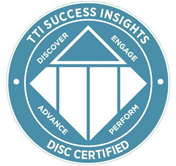The world of work is changing faster than ever. If we want our organisations to thrive, we need to get ahead of the trends shaping employee experience. Traditional approaches no longer cut it. To succeed, we must embrace agility, empathy, and innovation. Let’s dive into the key trends reshaping work and explore practical ways to keep your organisation future-ready.
Embrace AI—But Keep It Human
AI is already transforming how we work. It’s automating repetitive tasks and delivering insights faster than we ever could. But here’s the catch: AI can’t replace human connection. As we integrate AI into our workflows, we must ensure it enhances the human experience, not replaces it.
Practical Steps:
- Upskill Your Team: Equip your people to use AI as a tool for smarter, more informed decision-making.
- Balance Efficiency with Empathy: Use AI to streamline processes, but keep empathy at the heart of your employee interactions.
- Involve Employees in AI Integration: Engage your team in how AI is introduced. Their feedback will ensure AI supports their work, rather than complicating it.
Imagine your marketing team using AI for data analysis, but it’s the human touch in turning that data into compelling stories that truly drives success. This is the future—where AI and human creativity work together seamlessly.
Hybrid Work: Make It Work for Everyone
The pandemic taught us that remote work is possible—and, for many, preferable. But the future isn’t just about working from home. Hybrid work, combining remote flexibility with in-person collaboration, is the new normal. The challenge is making it work for everyone, not just those who prefer remote.
How to Get Hybrid Work Right:
- Listen to Your People: Regularly check in with your team to understand what’s working and what isn’t.
- Make Office Days Count: When people come to the office, ensure it’s for meaningful connection and collaboration—not just another day at the desk.
- Stay Flexible: Hybrid work isn’t a one-size-fits-all solution. Be prepared to adapt as your team’s needs evolve.
Consider this: your finance team splits their week between focused remote work and collaborative in-office sessions. This balance drives both productivity and connection. That’s hybrid work done right.
Well-being: A Business Essential, Not a Perk
Let’s be clear: employee well-being isn’t a “nice-to-have”—it’s a business necessity. Without well-being, there’s no engagement, no productivity, and no innovation. The future demands that we stop treating well-being as an afterthought and start embedding it into the core of our organisations.
How to Embed Well-being into Your Organisation:
- Make It Cultural: Well-being should be part of your company’s DNA, where leaders model healthy behaviours, and employees are encouraged to prioritise their health.
- Invest in Mental Health: Offer mental health resources like counselling, workshops, and stress management support.
- Monitor Workloads: Avoid burnout by regularly assessing workloads and ensuring they’re manageable.
Picture this: a culture where mental health is openly discussed, workloads are balanced, and well-being is prioritised from the top down. That’s a recipe for a thriving, engaged workforce.
Culture and Recognition: The Real Game-Changers
You might think pay and perks keep people around, but culture is what really makes them stay. A strong, positive culture—built on trust, respect, and recognition—creates loyalty and drives performance. And recognition is a critical part of that. When people feel valued, they’re more engaged, more committed, and more likely to go the extra mile.
Key Actions for Strengthening Culture:
- Recognise Regularly: Don’t wait for the annual review. Make recognition part of your daily routine.
- Build Connection: Invest in tools and activities that bring your people together, whether they’re remote or in-office.
- Live Your Values: Ensure your company values aren’t just words—they should be embedded in every decision and action.
Think of it this way: a colleague’s recognition during a team meeting has a far greater impact than an email from a manager. It builds connections, reinforces values, and strengthens culture. Simple but powerful.
Conclusion: The Future Is Human-Centred
The future of work isn’t just about embracing the latest trends. It’s about putting people at the heart of everything we do. AI will help us work smarter, but empathy and connection will make us work better. Hybrid work offers flexibility, but only if we get it right. And well-being isn’t a luxury—it’s essential to a thriving workforce.
The challenge ahead is clear: embrace change without losing sight of what truly matters—our people. Start now—invest in their well-being, prioritise connection, and create a workplace where everyone can thrive. The future is human-centred. Let’s make sure we’re ready for it.
At WINC HR, we’re dedicated to helping you navigate these changes. Our team of experienced HR consultants is here to help you create a future-focused organisation where employee experience drives success. Whether it’s integrating AI, optimising your hybrid work model, or embedding well-being into your culture, we’ve got the expertise to guide you every step of the way. Reach out to us today, and let’s build a people-centred workplace that’s ready for tomorrow.




